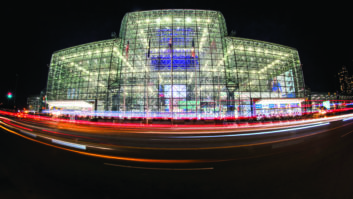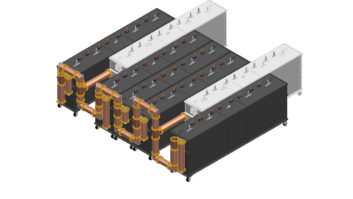
Antenna and transmission support equipment maker Dielectric is seeking to please both low-power and high-power radio broadcasters with new offerings for the 2016 NAB Show.
The DCR-U (shown) is aimed at the higher power broadcasters while the DCP-K is for the lower power range.
The company says, “The DCR-U is a broadband, circularly polarized ring antenna that minimizes tower footprint while doubling capacity. Its full bandwidth and high-power design characteristics — notably a pressurized tap point and four-inch balun — support capacity and high-voltage requirements for multi-station operations. The high-voltage protections are especially important for handling the immense voltage peaks that come with passing multiple analog FM and/or HD Radio stations through the same antenna.”
The DCP-K is a broadband, circularly polarized panel antenna. It “reduces the number of cables required in the feed system by half. Instead of using the traditional hybrid feed system and dual-input panels, the DCP-K design incorporates a single input directly into the balun — thus reducing feed line count and connections, which equates to increased reliability.” The company adds, “The DCP-K antenna’s compact and unobtrusive design provides a significant cost benefit to the low-power FM broadcaster, both upon installation and well into the future.”
In addition, Dielectric says it will be an “innovative field-tunable, FM two-channel combiner that eliminates various traditional components from the design. This includes the absence of coaxial Tee junctions, as well as the associated coaxial line and elbows.”
Dielectric Senior Engineer Derek Small said, “Traditionally, a Tee junction, a pair of delay lines and filters are used to multiplex two channels. By removing the Tee and delay lines, we’ve reduced the combiner footprint for space-limited sites and improved efficiency.” He added, “The tunable common case design also protects the broadcaster’s investment in the event of a frequency change, allowing the station to use the same infrastructure instead of replacing filters and line.”
NAB Show Booth: C2213
Info: www.dielectric.com












